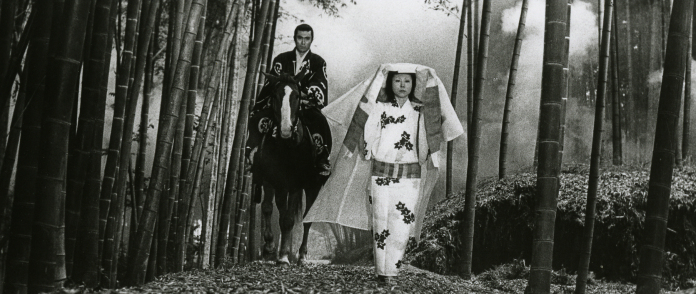CulBeat Express
2018.03.15 12:03
MoMA 미야가와 가즈오(宮川 一夫) 촬영감독 회고전(4/12-29)
조회 수 1402 댓글 0
Kazuo Miyagawa(宮川 一夫): Japan’s Greatest Cinematographer
뉴욕현대미술관(MoMA)가 4월 12일부터 29일까지 일본 영화 촬영감독 미야가와 가즈오(宮川 一夫) 회고전을 연다. 미야가와 가즈오는 구로사와 아키라, 오즈 야스지로, 미조구치 겐지, 이치가와 곤 등 일본 대표 감독들과 함께 작업하면서 전후 최고의 촬영감독으로 평가됐다.
April 12, 2018–April 29, 2018
The Roy and Niuta Titus Theaters, MoMA

Rashomon
The most influential cinematographer of postwar Japanese cinema, Kazuo Miyagawa (1908–1999) worked intimately with Yasujirô Ozu, Akira Kurosawa, Kenji Mizoguchi, and Kon Ichikawa on some of their most important films. It was Miyagawa who, in his astonishing versatility, helped perfect Ozu’s exquisitely framed tatami-level compositions in Floating Weeds (1959); the long, choreographed tracking sequences of Mizoguchi’s Ugetsu (1953); the multiple perspectives and jump cuts of Kurosawa’s Rashomon (1950) and Yojimbo (1961); and the innovative use of cameras from different vantage points in Ichikawa’s Tokyo Olympiad (1965).
This first major US retrospective of Miyagawa’s work in more than 35 years opens with a rare screening of Hiroshi Inagaki’s 1943 version of The Rickshaw Man and the 4K restoration premiere of Ozu’s Floating Weeds (1959), a special event introduced by Miyagawa’s son Ichiro and Miyagawa’s camera assistant Masahiro Miyajima. A career-spanning survey of Miyagawa’s cinematography then continues both at MoMA and Japan Society throughout the month. Additionally, new 4K restorations of Kenji Mizoguchi’s A Story From Chikamatsu (1953) and Sansho the Bailiff (1954), both shot by Miyagawa, will run at Film Forum from April 6 through 12.
Miyagawa admired the stark, high-contrast lighting of German Expressionist films of the 1920s, and when he began his career at the Nikkatsu studio in the 1930s, he elevated routine melodramas and musicals through his own stylized black-and-white photography, most notably in Masahiro Makino’s Singing Lovebirds (1939), using mirrors outdoors to create dappled sunlight, for example, or a telephoto lens to suggest emotional distance. But it was his later experimentation with color for which he became legendary. Miyagawa explored the painterly, dramatic, and symbolic qualities of color in films as varied as Mizoguchi’s New Tales of the Taira Clan (1955), Kazuo Ikehiro’s Zatoichi and the Chest of Gold (1964), and Masahira Shinoda’s Silence (1971), based on the same Shûsaku Endô’s novel as the later Martin Scorsese adaptation, as well as Shinoda’s Ballad of Orin (1977) and Gonza the Spearman (1986).
Miyagawa is credited with having invented a color technology, the “bleach bypass,” on Ichikawa’s Her Brother (1960), a process by which he gained greater control over saturation and tonality. The effect is to cast a silvery sheen over the color image, a look that has been used in countless films since then, from cinematographer Roger Deakins’s work on Michael Radford’s 1984 to Janusz Kamínski’s work on Steven Spielberg’s Saving Private Ryan (1998). Another of Miyagawa’s masterful achievements was on Kon Ichikawa’s Tokyo Olympiad (1965), where he supervised 164 cameramen, who used 234 different lenses to capture the dramatic intensity of competition in extreme close-up. The enduring influence of Miyagawa’s innovations and artistic sensibility is further reflected in rare 35mm screenings of Hiroshi Inagaki’s Children Hand in Hand (1948), Kozaburo Yoshimura’s Reminiscence (1953) and Bamboo Doll of Echizen (1963), and Yasuzo Masumura’s Irezumi (The Spider Tattoo) (1966).
Organized by Joshua Siegel, Curator, Department of Film, The Museum of Modern Art; and Aiko Masubuchi and Kazu Watanabe, film programmers at Japan Society.
Special thanks to The National Film Archive of Tokyo, The Japan Foundation, Kadokawa, and Janus Films for the loan of prints and digital restorations.





